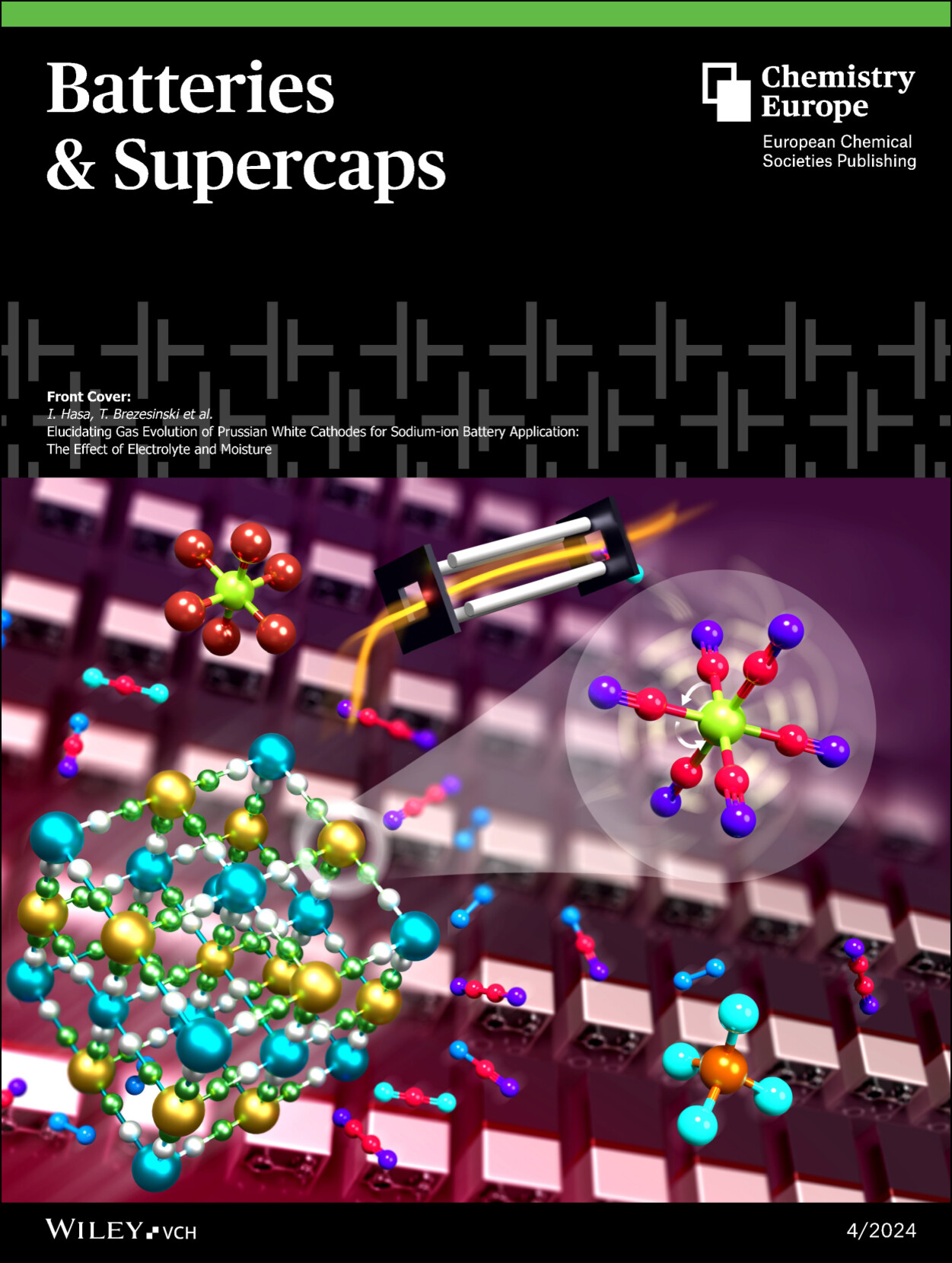Paper‐like 100% Si Nanowires Electrodes Integrated with Argyrodite Li6PS5Cl Solid Electrolyte
IF 5.1
4区 材料科学
Q2 ELECTROCHEMISTRY
引用次数: 0
Abstract
Silicon anodes are a promising solution in all‐solid‐state batteries (ASSBs) due to minor lithium dendrite risk, high capacity, and low potential. Research on Si integration in ASSBs is still nascent, requiring a deep understanding of the interplay between electrode composition, structure, and performance. Here, we present the first study on 100% Si nanowires integrated with Li6PS5Cl solid electrolyte (SE). The anodes are paper‐like networks of aggregated Si nanowires produced by a slurry‐free method without carbon/binders. Despite the lack of any conductor, the Si anodes provide >2.5 Ah/g capacity at a high mass loading of 1.7 mg/cm2(~5 mAh/cm2), demonstrating sufficient electric and ionic conductivities. Electro‐chemo‐mechanical properties of the electrodes over (de)lithiation were probed through electrochemical impedance spectroscopy, ex‐situ microscopy, and in‐operando pressure regulation measurements. The lithiated electrode/SE interface was found to be electrochemically stable. Cross‐sectional microscopy at various states‐of‐charge confirmed the buffering effect of the anode porosity, resulting in the preservation of the electrode’s thickness after the first lithiation but a considerable shrinkage during delithiation, producing cracking and formation of the new interface. Capacity remains constant for five cycles, then decreases linearly up to 40 cycles. This is attributed to repeated fracture of the anode/electrolyte interface and the corresponding impedance increase与 Argyrodite Li6PS5Cl 固体电解质集成的纸状 100% 硅纳米线电极
硅阳极具有锂枝晶风险小、容量大、电位低等优点,是全固态电池(ASSB)中一种前景广阔的解决方案。在 ASSB 中集成硅的研究仍处于起步阶段,需要深入了解电极成分、结构和性能之间的相互作用。在此,我们首次对 100% 硅纳米线与 Li6PS5Cl 固体电解质(SE)进行了研究。阳极是由聚合硅纳米线组成的纸状网络,采用无浆料方法生产,不含碳/粘合剂。尽管没有任何导体,但硅阳极在 1.7 mg/cm2 的高负载质量(约 5 mAh/cm2)下仍能提供 2.5 Ah/g 的容量,显示出足够的导电性和离子导电性。通过电化学阻抗谱、原位显微镜和操作中压力调节测量,探究了电极(脱)石化后的电化学机械特性。研究发现,石化电极/SE 界面具有电化学稳定性。不同荷电状态下的横截面显微镜观察证实了阳极多孔性的缓冲作用,这导致电极在第一次光刻后厚度保持不变,但在脱光刻过程中会出现相当大的收缩,产生裂纹并形成新的界面。容量在五个周期内保持不变,然后在 40 个周期内呈线性下降。这是因为阳极/电解质界面反复断裂,阻抗相应增加。
本文章由计算机程序翻译,如有差异,请以英文原文为准。
求助全文
约1分钟内获得全文
求助全文
来源期刊

Batteries & Supercaps
Multiple-
CiteScore
8.60
自引率
5.30%
发文量
223
期刊介绍:
Electrochemical energy storage devices play a transformative role in our societies. They have allowed the emergence of portable electronics devices, have triggered the resurgence of electric transportation and constitute key components in smart power grids. Batteries & Supercaps publishes international high-impact experimental and theoretical research on the fundamentals and applications of electrochemical energy storage. We support the scientific community to advance energy efficiency and sustainability.
 求助内容:
求助内容: 应助结果提醒方式:
应助结果提醒方式:


